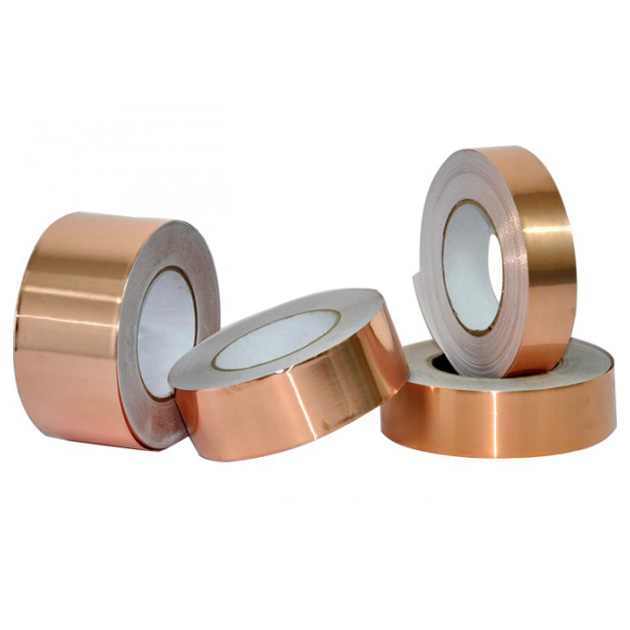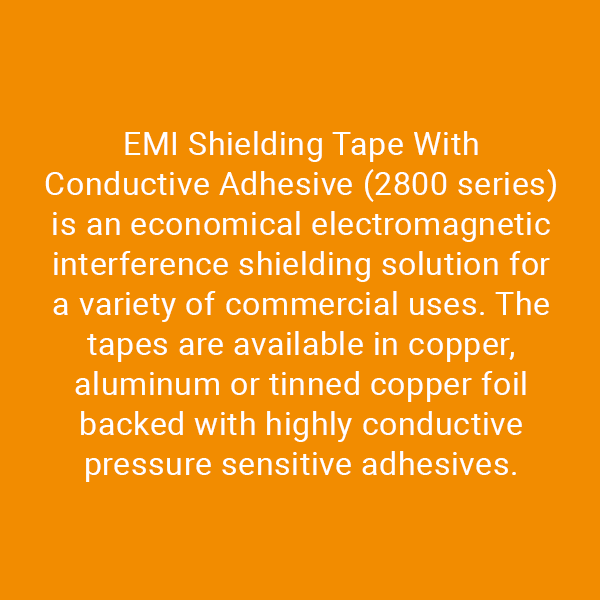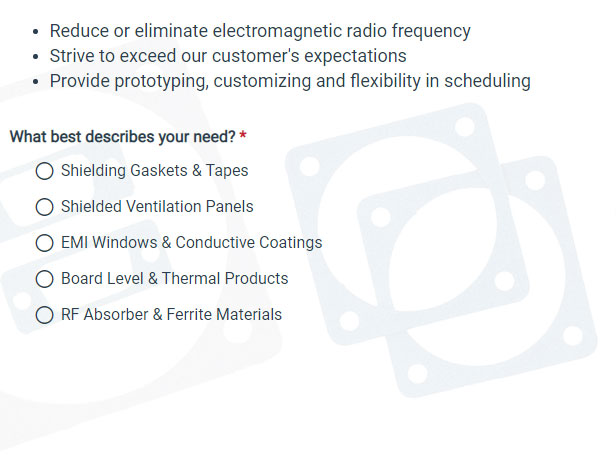EMI Shielding Tape With Adhesive
Series No. 2800
MAJR Products’ EMI shielding tape, also known as copper tape or foil tape, offers an economical EMI shielding solution for a variety of commercial uses. The tapes are available in copper or aluminum backed with conductive pressure-sensitive adhesives. Copper tape meets the requirements of MIL-T-47012 for corrosion resistance. Typical properties are shown in Table 1.
Copper tape is available with a non-conductive adhesive for applications requiring surface conductivity only. Both standard length rolls and die-cut custom shapes can be ordered. Other types of shielding tape are available upon request.
Overview
MAJR’s copper foil tape, offers an economical EMI shielding solution for a variety of commercial uses. The tapes are available in copper backed with conductive pressure-sensitive adhesives. Copper tape meets the requirements of MIL-T-47012 for corrosion resistance.
Copper tape can be provided as with a non-conductive adhesive as an option for applications requiring surface conductivity only. Both standard length rolls and die-cut custom shapes are available. Other types of shielding tape are available upon request.
Technical Information
Properties — Table 1
| Copper 2 mil Copper Foil with Conductive Acrylic Adhesive |
Silver 1.8 mil Aluminum Foil with Conductive Acrylic Adhesive |
|
| Color | Copper | Silver |
| Tempurature Resistance |
155 degress C” | — |
| Resistivity through Adhesive |
10 milliohms/square inch |
40 milliohms/ square inch |
| Elongation at Break |
4% |
5% |
| Backing | .0014” (1oz) Copper Foil |
.0018” Aluminum Foil |
| Adhesive | Conductive Acrylic | Conductive Acrylic |
| Inter Liner | Polyethelene Coated Paper Line | — |
| Thickness | .0035” +/-.0005” | .0036” +/-10% |
| Adhesive (thickness) | — | — |
| Peel Strength | 35 oz./inch of width | 35 oz./inch of width |
| Breaking Strength | 25 lbs./inch of width | 15 lbs./inch of width |
| RFI attenuation | — | — |
| Tape Dimensions (Max) |
— | — |
Product Data Sheet
Applications
EMI radiation measurement trouble-shooting, using tape to shield ventilation slots or seam gaps.
Provide electrical continuity in seams of EMI-shielding rooms and electronic enclosures.
Supply electrical contact to surfaces that can’t be soldered, such as conductive plastic or aluminum.
Provide EMI shielding for cables when tape is wrapped around the cable. (An overlap is recommended.)
Provide ESD shielding.
Provide corrosion-resistant ground contact points.



